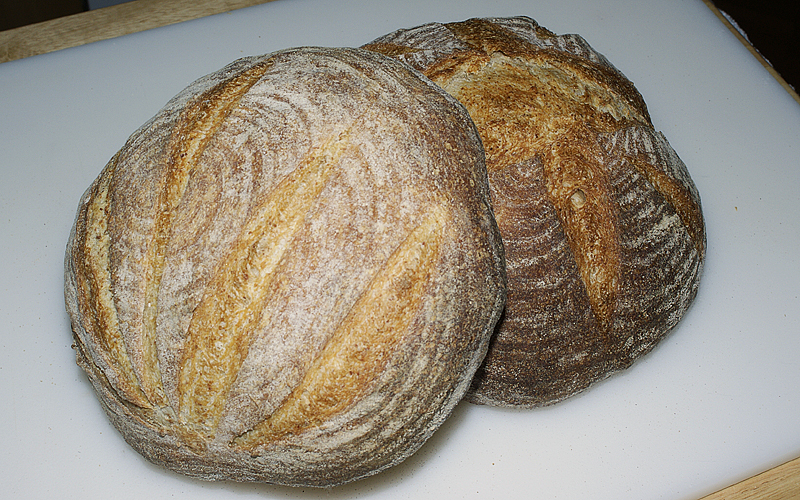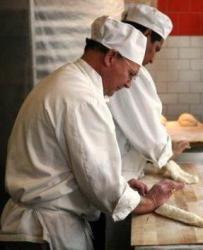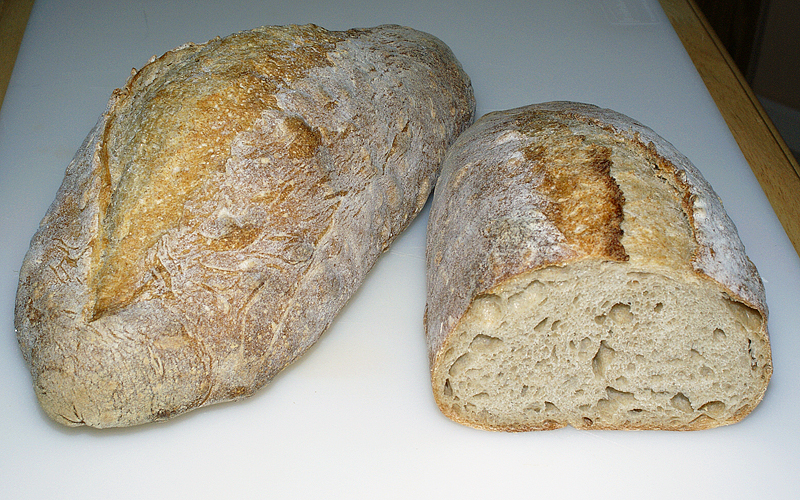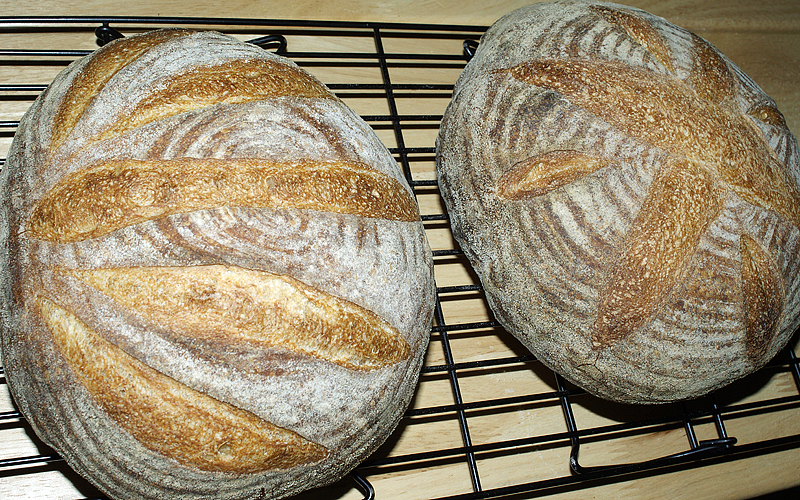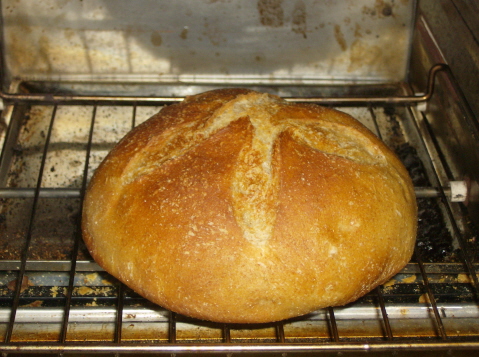Inspiration from these boards
On Saturday I baked two breads that have been on my list for quite a while. Hans Joakim has posted on one of his favorite breads several times in recent months (here, here, here, and here) and I really wanted to give that Pain au levain with whole wheat a try (Hamelman, “Bread” p. 160). And as you know, when Hans Joakim presents something, it always looks so very enticing.

We really love it! The taste is excellent, the crust strong and the crumb wonderfully open.

Amazing that the kneading time is only about 2 minutes, and then just two folds at 50 and 100 minutes! That’s it!
I will definitely make this again!
I couldn’t have chosen a more different bread to be its partner: the Buttermilk-Whole-Wheat-Bread that JMonkey (here's the recipe from Laurels Kitchen Bread Book - I used the biga approach) and Salome have posted on (here and here). This dough, in stark contrast to the above Pain au levain, needs to be kneaded for a very l--o--n--g time. It turned out very well, even though I over-proofed it (when I scored it, it made pouf, and the loaves sank somewhat; I think I should have skipped the slash altogether).
The problem is always the timing. To make Saturday’s loaves (4 of them), it took about 8 hours, and to always be around when the next fold or shaping, etc., is due, is very difficult. Despite my careful calculations, when my son’s soccer game went into over time (i.e. got delayed), my schedule was pouf, gone as well, and my proofing went into over time too… (by about an hour!). Also, I have basically never baked bread in pans, but for the school sandwiches, I guess that is a good shape.

My changes to the recipe above:
I used 100% white whole-wheat flour (from Trader Joe, first time I bought this) and cut the honey in half. I also added two Tbsp of ripe starter, as Salome suggested she might do in a further test.
The taste was excellent.




